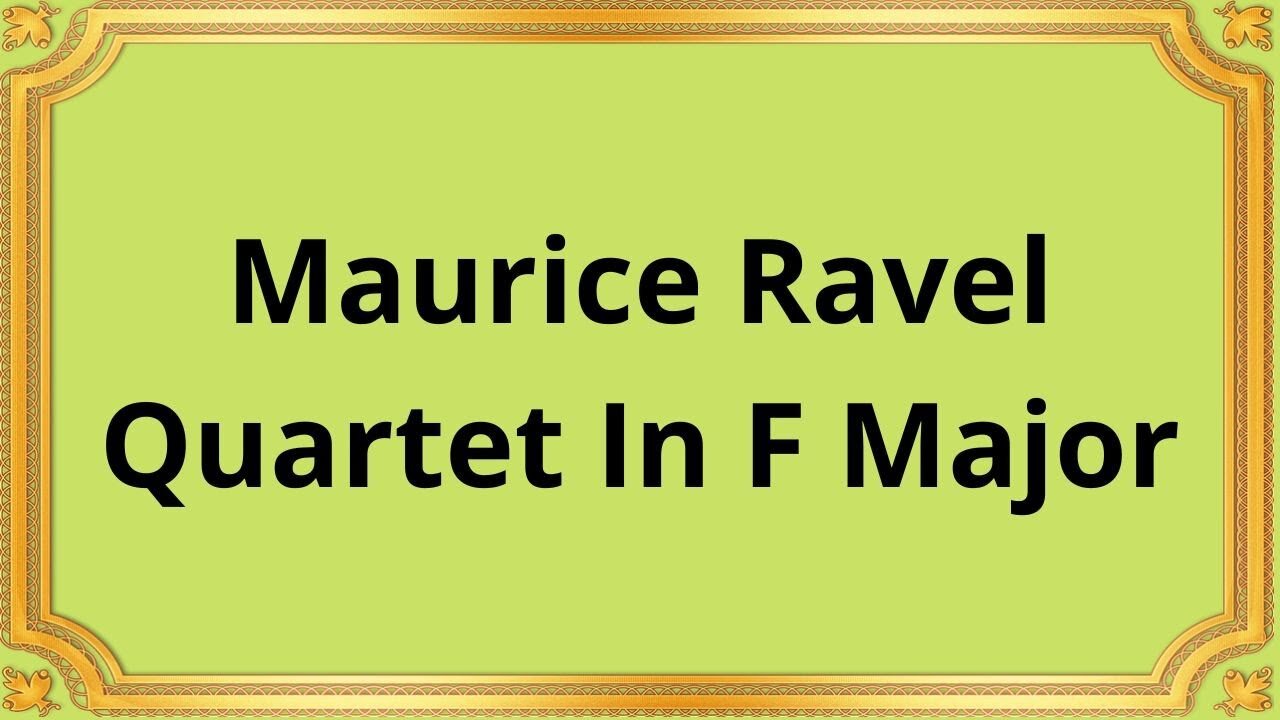Premium Only Content

Maurice Ravel Quartet In F Major
#ClassicalMusic #MusicalComposition #MauriceRavel #QuartetInFMajor #ChamberMusic #Impressionism #FrenchComposer #20thCentury #MusicalStructure #TonalColors #Virtuosity #HarmonicLanguage
Publication date 1948
Budapest String Quartet
Maurice Ravel, a prominent French composer of the 20th century, left an indelible mark on classical music with his innovative compositions. Among his notable works is the Quartet in F Major, a chamber music masterpiece that showcases Ravel's musical genius.
Ravel composed the Quartet in F Major in 1902, during a time when he was emerging as one of the leading figures of French Impressionism in music. This piece represents a departure from traditional quartet forms, as Ravel seamlessly blends tonal colors, harmonic language, and virtuosic writing to create a unique musical experience.
The Quartet in F Major follows the traditional four-movement structure of a classical quartet: Allegro moderato, Assez vif - Très rythmé, Très lent, and Vif et agité. Ravel's ability to craft a cohesive musical narrative within each movement demonstrates his mastery of musical structure and form.
Ravel's Quartet in F Major is characterized by its impressionistic qualities, drawing inspiration from the visual arts movement of the same name. The composition showcases Ravel's meticulous attention to tonal colors, as he utilizes the unique timbres of each instrument to create a lush and evocative sonic palette. The interplay between the strings creates a delicate and shimmering texture, reminiscent of the impressionist painters' brushstrokes.
The Quartet in F Major demands virtuosity and technical brilliance from the performers. Ravel's intricate writing for each instrument showcases his deep understanding of their capabilities and challenges the musicians to showcase their skill and precision. The composition's rhythmic complexities and rapid passages add to its overall brilliance.
Maurice Ravel's Quartet in F Major holds a significant place within his repertoire and the realm of classical music. It represents a milestone in Ravel's career, showcasing his unique compositional style and his ability to push the boundaries of traditional forms. The quartet's enduring popularity and frequent performances by renowned chamber ensembles ensure its continued appreciation by musicians and audiences worldwide.
Conclusion:
Maurice Ravel's Quartet in F Major stands as a testament to his musical brilliance and his contribution to the world of classical music. Through its impressionistic qualities, meticulous attention to tonal colors, and virtuosic writing, this composition offers a captivating and immersive experience for both performers and listeners. It represents a significant milestone in Ravel's career and serves as a reminder of his lasting legacy as a trailblazing composer of the 20th century.
You have the opportunity to support the channel:
https://destream.net/live/RadSiarAl/donate
https://www.buymeacoffee.com/6355radsiaral
-
 6:07
6:07
Classical music_Music Inspiration
1 day agoJoseph Haydn Piano Sonata in D Major, Hob. XVI:51
181 -
 21:26
21:26
Stephen Gardner
22 hours ago🔥What JUST leaked out of Congress must be STOPPED NOW!
51.9K143 -
 53:25
53:25
tether
11 days agoStability and Freedom in Chaos: The Story of Tether USD₮ | Tether Documentary (USDT)
89.3K5 -
 56:44
56:44
VSiNLive
1 day agoFollow the Money with Mitch Moss & Pauly Howard | Hour 1
40K2 -
 36:50
36:50
Anthony Pompliano
2 days ago $9.79 earnedInvestors Are ALL-IN On Bitcoin
24.3K7 -
 32:19
32:19
SB Mowing
9 days agoA Backyard She’s NEVER Seen – Now Safe for the Kids to Play!
29.2K17 -
![[Day 26] CS Blast bounty baby](https://1a-1791.com/video/fwe2/8a/s8/1/Z/H/j/_/ZHj_w.0kob-small-Day-26-CS-Blast-bounty-baby.jpg) 2:09:11
2:09:11
ggezlol_tv
6 hours ago[Day 26] CS Blast bounty baby
56.1K1 -
 2:32:17
2:32:17
Sgtfinesse
6 hours ago💥Sunday Morning Hunt for Featherweight Artifact | New World PVP Server: Sclavia
68.2K3 -
 11:25
11:25
Film Threat
22 hours agoLET'S DISCUSS THE 2025 OSCAR NOMINATIONS | Film Threat News
49.4K18 -
 13:07
13:07
DEADBUGsays
6 hours agoThe Southport Massacre, The Great British Cover-Up
42.7K25